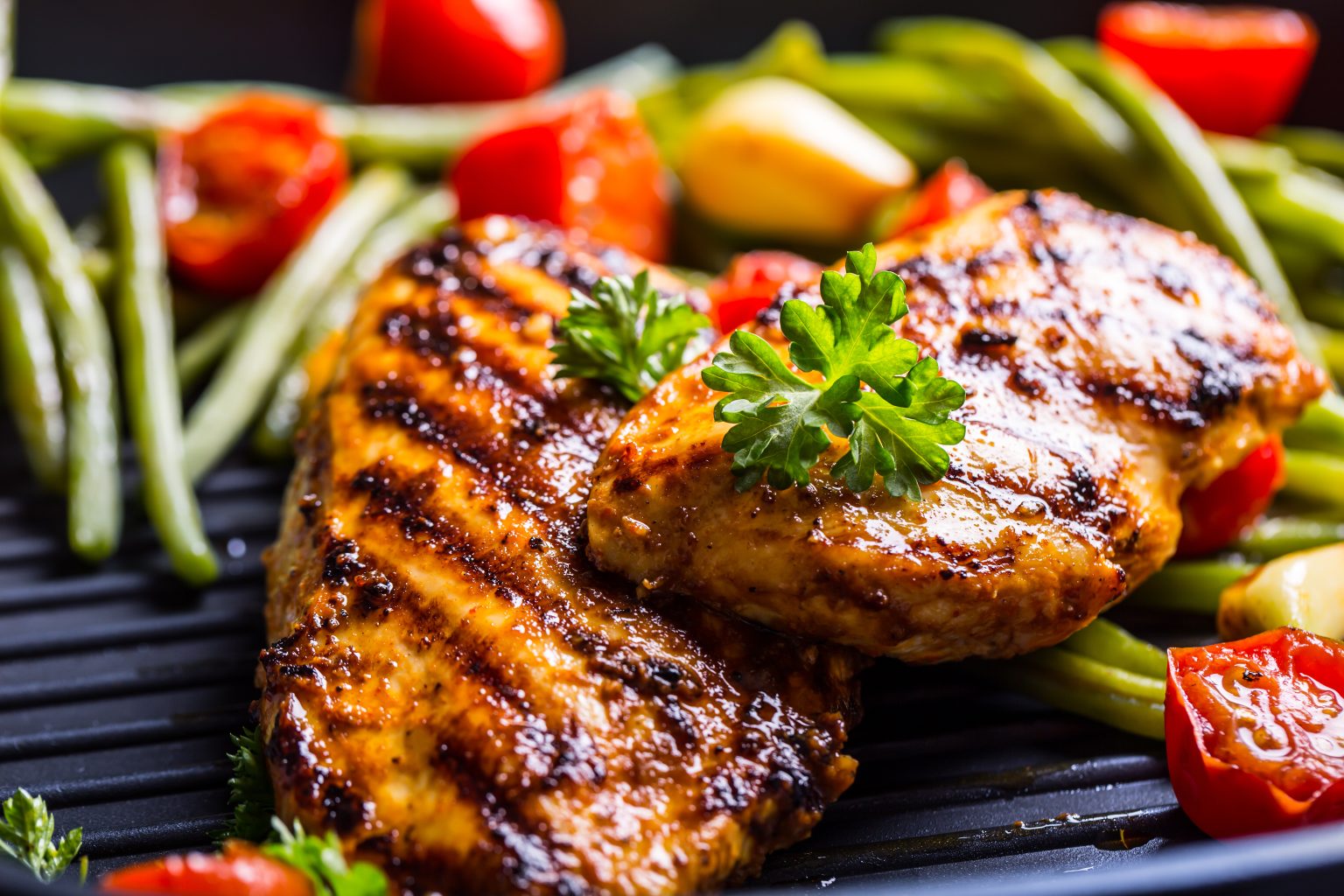Baking chicken breasts is an art of simplicity and versatility, offering a blank canvas for many culinary adventures. These cuts are a favourite for their convenience and ability to absorb various flavours. However, achieving a perfect balance of juiciness and tenderness can sometimes be elusive, with many cooks falling prey to the common woe of dry and rubbery results.
The secret to consistently succulent baked chicken breasts lies in mastering the technique. Armed with tried-and-tested methods, home cooks can transform this humble protein into a delectable dish. This article will unveil the critical steps to ensuring that chicken comes out of the oven moist and flavourful, ready to complement any meal with finesse.
Optimal Oven Temperature for Baking Chicken Breasts
To achieve a moist and tender chicken breast, bake at a high temperature of 220°C. This method not only preserves the chicken’s natural juices but also allows for a swifter cooking time, typically 15 to 20 minutes, depending on the size of the chicken breast.
When baking, the critical indicator of doneness is reaching an internal temperature of 74°C. Use a meat thermometer to ensure accuracy.
- Preheat oven to 220°C.
- Baking time: 15 to 20 minutes, size-dependent
- Final internal temperature: 74°C for safety and doneness
Preparing Oven-Cooked Chicken Fillets
Necessary Components
- Four boneless, skin-free halves of chicken breasts (approximately 113 grams each)
- 2 tsp of olive oil
- 2 tsp of ground black pepper
- 1/4 tsp of salt
Methodology
Step One: Saline Soak
Initially, submerge the chicken in a blend of water and a liberal amount of salt for roughly 20 to 30 minutes. This enhances the meat’s inherent savour and moistness, yielding an exceptionally tender piece of chicken. Consider this essential step the secret to ensuring the meat remains succulent and not stringy.
Step Two: Flavour Enhancement
After the saline soak:
- Dispose of the liquid and pat the meat dry meticulously using kitchen towels.
- Apply olive oil with a pastry brush and dust with salt, pepper, and other desired spices.
- If the fillets are unevenly thick, employ a meat mallet to flatten them until uniformly even; this will promote consistent cooking.
Without a mallet, a heavy skillet or saucepan can act as a substitute.
Step Three: Oven Roasting
Proceed to place the chicken in a lightly oiled roasting dish or sheet pan and place it in a preheated oven set at 425° Fahrenheit. The chicken should cook for 15 to 20 minutes until its internal temperature reads 165° Fahrenheit, signifying it’s cooked through.
Note: It’s crucial to monitor the meat’s internal temperature as consuming poultry that hasn’t reached 165° Fahrenheit can lead to food-related sicknesses while exceeding this temperature could result in overcooked and tough meat. Therefore, one should always utilise a precise cooking thermometer.
Step Four: Resting Period
Upon reaching the correct temperature, remove the chicken from the oven and let it stand untouched for five minutes. This resting phase is paramount, as it ensures the redistribution and retention of juices within the chicken, keeping it moist upon slicing.
Guidance on Perfecting Oven-Baked Chicken Breasts
Suggested Accompaniments for Oven-Baked Chicken
When considering what dishes to serve alongside oven-baked chicken, the options are versatile and can cater to many tastes. A fresh green salad or nutrient-dense roasted vegetables provide a balanced meal. For a more comforting pairing, consider creamy mashed potatoes or a hearty grain like quinoa or rice pilaf. The simplicity of chicken breasts makes them a blank canvas for culminating an array of side dishes—each bringing a unique flair to the dining table.
Best Practices for Storing Cooked Chicken
Proper storage techniques are essential for preserving the quality of your cooked chicken breasts. For short-term storage, place the chicken in an airtight container and refrigerate for up to four days. Ensuring that the container is sealed tightly will help maintain the chicken’s moisture and flavour.
For more extended storage, wrap the chicken securely in aluminium foil before placing it in an airtight container or a sealable freezer bag. This will keep the chicken suitable for consumption for up to four months in the freezer. Thawing should be done gradually in the refrigerator to ensure safety and preserve the chicken’s texture.



